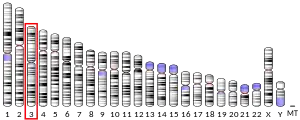LARS2
Probable leucyl-tRNA synthetase, mitochondrial is an enzyme that in humans is encoded by the LARS2 gene.[5][6]
| LARS2 | |||||||||||||||||||||||||||||||||||||||||||||||||||
|---|---|---|---|---|---|---|---|---|---|---|---|---|---|---|---|---|---|---|---|---|---|---|---|---|---|---|---|---|---|---|---|---|---|---|---|---|---|---|---|---|---|---|---|---|---|---|---|---|---|---|---|
| Identifiers | |||||||||||||||||||||||||||||||||||||||||||||||||||
| Aliases | LARS2, LEURS, PRLTS4, mtLeuRS, leucyl-tRNA synthetase 2, mitochondrial, HLASA | ||||||||||||||||||||||||||||||||||||||||||||||||||
| External IDs | OMIM: 604544 MGI: 2142973 HomoloGene: 6526 GeneCards: LARS2 | ||||||||||||||||||||||||||||||||||||||||||||||||||
| |||||||||||||||||||||||||||||||||||||||||||||||||||
| |||||||||||||||||||||||||||||||||||||||||||||||||||
| |||||||||||||||||||||||||||||||||||||||||||||||||||
| |||||||||||||||||||||||||||||||||||||||||||||||||||
| |||||||||||||||||||||||||||||||||||||||||||||||||||
| Wikidata | |||||||||||||||||||||||||||||||||||||||||||||||||||
| |||||||||||||||||||||||||||||||||||||||||||||||||||
This gene encodes a class 1 aminoacyl-tRNA synthetase, mitochondrial leucyl-tRNA synthetase. Each of the twenty aminoacyl-tRNA synthetases catalyzes the aminoacylation of a specific tRNA or tRNA isoaccepting family with the cognate amino acid.[6]
References
- GRCh38: Ensembl release 89: ENSG00000011376 - Ensembl, May 2017
- GRCm38: Ensembl release 89: ENSMUSG00000035202 - Ensembl, May 2017
- "Human PubMed Reference:". National Center for Biotechnology Information, U.S. National Library of Medicine.
- "Mouse PubMed Reference:". National Center for Biotechnology Information, U.S. National Library of Medicine.
- Sohm B, Sissler M, Park H, King MP, Florentz C (May 2004). "Recognition of human mitochondrial tRNALeu(UUR) by its cognate leucyl-tRNA synthetase". J Mol Biol. 339 (1): 17–29. doi:10.1016/j.jmb.2004.03.066. PMID 15123417.
- "Entrez Gene: LARS2 leucyl-tRNA synthetase 2, mitochondrial".
Further reading
- Olsson P, Wennberg AL (1992). "[Midwife and research. Conference report]". Jordemodern. 104 (11): 408–9, 404. PMID 1684970.
- Nomura N, Miyajima N, Sazuka T, et al. (1995). "Prediction of the coding sequences of unidentified human genes. I. The coding sequences of 40 new genes (KIAA0001-KIAA0040) deduced by analysis of randomly sampled cDNA clones from human immature myeloid cell line KG-1". DNA Res. 1 (1): 27–35. doi:10.1093/dnares/1.1.27. PMID 7584026.
- Nomura N, Miyajima N, Sazuka T, et al. (1995). "Prediction of the coding sequences of unidentified human genes. I. The coding sequences of 40 new genes (KIAA0001-KIAA0040) deduced by analysis of randomly sampled cDNA clones from human immature myeloid cell line KG-1 (supplement)". DNA Res. 1 (1): 47–56. doi:10.1093/dnares/1.1.47. PMID 7584028.
- Szeles A, Yang Y, Sandlund AM, et al. (1998). "Human/mouse microcell hybrid based elimination test reduces the putative tumor suppressor region at 3p21.3 to 1.6 cM". Genes Chromosomes Cancer. 20 (4): 329–36. doi:10.1002/(SICI)1098-2264(199712)20:4<329::AID-GCC3>3.0.CO;2-3. PMID 9408748. S2CID 39132097.
- Kiss H, Kedra D, Yang Y, et al. (2000). "A novel gene containing LIM domains (LIMD1) is located within the common eliminated region 1 (C3CER1) in 3p21.3". Hum. Genet. 105 (6): 552–9. doi:10.1007/s004390051144. PMID 10647888.
- Strausberg RL, Feingold EA, Grouse LH, et al. (2003). "Generation and initial analysis of more than 15,000 full-length human and mouse cDNA sequences". Proc. Natl. Acad. Sci. U.S.A. 99 (26): 16899–903. Bibcode:2002PNAS...9916899M. doi:10.1073/pnas.242603899. PMC 139241. PMID 12477932.
- Yao YN, Wang L, Wu XF, Wang ED (2004). "The processing of human mitochondrial leucyl-tRNA synthetase in the insect cells". FEBS Lett. 534 (1–3): 139–42. doi:10.1016/S0014-5793(02)03833-4. PMID 12527375. S2CID 21901003.
- Park H, Davidson E, King MP (2003). "The pathogenic A3243G mutation in human mitochondrial tRNALeu(UUR) decreases the efficiency of aminoacylation". Biochemistry. 42 (4): 958–64. doi:10.1021/bi026882r. PMID 12549915.
- Yao YN, Wang L, Wu XF, Wang ED (2004). "Human mitochondrial leucyl-tRNA synthetase with high activity produced from Escherichia coli". Protein Expr. Purif. 30 (1): 112–6. doi:10.1016/S1046-5928(03)00097-4. PMID 12821328.
- Gerhard DS, Wagner L, Feingold EA, et al. (2004). "The status, quality, and expansion of the NIH full-length cDNA project: the Mammalian Gene Collection (MGC)". Genome Res. 14 (10B): 2121–7. doi:10.1101/gr.2596504. PMC 528928. PMID 15489334.
- Munakata K, Iwamoto K, Bundo M, Kato T (2005). "Mitochondrial DNA 3243A>G mutation and increased expression of LARS2 gene in the brains of patients with bipolar disorder and schizophrenia". Biol. Psychiatry. 57 (5): 525–32. doi:10.1016/j.biopsych.2004.11.041. PMID 15737668. S2CID 28499960.
- 't Hart LM, Hansen T, Rietveld I, et al. (2005). "Evidence that the mitochondrial leucyl tRNA synthetase (LARS2) gene represents a novel type 2 diabetes susceptibility gene". Diabetes. 54 (6): 1892–5. doi:10.2337/diabetes.54.6.1892. PMID 15919814.
This article is issued from Wikipedia. The text is licensed under Creative Commons - Attribution - Sharealike. Additional terms may apply for the media files.





